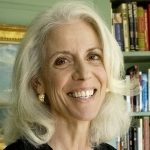 (Host) Just a few days from now, many Americans will sit down to a Thanksgiving
(Host) Just a few days from now, many Americans will sit down to a Thanksgiving
meal that reflects the food the Pilgrims ate. Commentator Susan Cooke
Kittredge suggests there are other things for which the Pilgrims might
also be remembered.
(Kittredge) All across America children have
been learning about the Pilgrims’ journey to this country and their
settling in Plymouth. We all know of the Pilgrims’ desire for religious
freedom, their crossing on the Mayflower and their relationship with the
Native Americans. But after elementary school we are apt to forget some
of the key elements of this remarkable story and begin to use the terms
"Pilgrim" and "Puritan" interchangeably. We shouldn’t.
The
Puritans sought to purify the Church of England from within; they came
to America to start a "New" England, liberated from the persecution they
were experiencing in England.
The Pilgrims were a small group
within the Puritan movement in England but their story is very
different. They didn’t think they’d ever attain the changes in the
practice of their religion that they desired by working from within the
church; so they sought separation. But a key part of their story is that
they didn’t come directly to America from England. Driven from England
by James 1, in 1608 they fled to Holland where they remained for 12
years. They settled in Leyden, a university city, and were exposed to a
community that was intellectually, culturally, religiously, and
economically very diverse. They arrived there with very little, so their
Calvinist work ethic stood them in good stead as they learned from the
Dutch a variety of trades that would aid them in America: metallurgy,
carpentry, masonry. The Dutch were a thrifty and industrious people who
prized efficient government and valued civic responsibility, traits not
lost on the newcomers.
The Pilgrims’ experience in Leyden
changed them; from a sheltered existence in northern England, they were
plunged into a very different world. They worked and lived with people
of varying faiths and backgrounds and by necessity learned a level of
tolerance and acceptance they had not previously known.
Unlike
the Puritans of the Massachusetts Bay Colony whose background had been
fairly circumscribed, because of their time in Leyden, the Pilgrims of
Plymouth Colony were more broadminded and inclusive. That they got along
so well with the Native Americans was testimony to this.
The
Pilgrims landed in Provincetown and settled in Plymouth in the late fall
of 1620 as the winter winds were whistling in. By the spring of 1621,
half of those who arrived on the Mayflower had died; of the 52
remaining, 34 were children and only 4 were adult females. Their good
relationship with the Native Americans became their lifeline to
survival.
The Pilgrims’ legacy is woven throughout Vermont, in
Meeting Houses, Congregational Churches, in Town Meetings and an ethic
of hard work and thriftiness.
This Thanksgiving as we honor the
Pilgrims, let’s do so by recalling not just the food they harvested but
the seeds they sowed in this nation’s soul: seeds of inclusion, respect
and an unfailing belief that all people are created equal – and endowed
by their creator with certain unalienable rights – such as life, liberty
and the pursuit of happiness.